Making the Most of Zelda’s Gameplay
Posted on May 17 2013 by Mases Hagopian
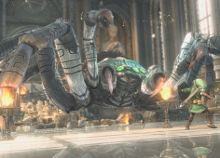 Gameplay is without a doubt the most important feature of a Zelda game. Nearly every release has emphasized it over every other aspect — with the exception of Twilight Princess, which was designed to be a more cinematic experience — and rightfully so. Gameplay is the main feature of video games in general. The interactivity video games provide is something that no other visual medium can hope to recreate, making it an important factor in any video game, even if story is a major part of the identity of some games (such as the Metal Gear Solid franchise). There’s no way around it; if the gameplay of a Zelda game suffers, then the most fulfilling part of the experience is shot. This means developers must attempt to provide gamers with polished and fleshed-out mechanics when developing a new title. But what exactly does it take to achieve a goal like that? What must a Zelda game have in order to make its core gameplay a success? In this article, I’ll be presenting my thoughts on that very topic. I’ll be going over specific features that I feel Zelda needs the most for its core gameplay to be at its finest and will provide examples from various Zelda titles to help get my points across. I’ll start with what I feel is the most important thing for the Zelda series to get right.
Gameplay is without a doubt the most important feature of a Zelda game. Nearly every release has emphasized it over every other aspect — with the exception of Twilight Princess, which was designed to be a more cinematic experience — and rightfully so. Gameplay is the main feature of video games in general. The interactivity video games provide is something that no other visual medium can hope to recreate, making it an important factor in any video game, even if story is a major part of the identity of some games (such as the Metal Gear Solid franchise). There’s no way around it; if the gameplay of a Zelda game suffers, then the most fulfilling part of the experience is shot. This means developers must attempt to provide gamers with polished and fleshed-out mechanics when developing a new title. But what exactly does it take to achieve a goal like that? What must a Zelda game have in order to make its core gameplay a success? In this article, I’ll be presenting my thoughts on that very topic. I’ll be going over specific features that I feel Zelda needs the most for its core gameplay to be at its finest and will provide examples from various Zelda titles to help get my points across. I’ll start with what I feel is the most important thing for the Zelda series to get right.
Combat
First and foremost, the combat needs to have solid design. Stimulating combat is an absolute must-have for any game with lots of action in it, and Zelda obviously meets that criteria. There are two features that I believe need to be present for Zelda’s combat to be at its best, and they are as follows:
First, intelligent and challenging enemies. It’s no fun when an enemy is dumb as all get-out and allows you a guaranteed hit. There are some enemies that shouldn’t be much of a challenge — Keese and Octoroks, for example — but more advanced enemies should not be capable of being disposed of with little to no effort. Over the course of its lifetime, Zelda has both excelled and failed at this.
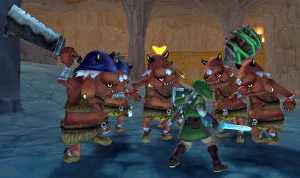 All the way through the N64 games, most enemies did a pretty good job of providing a decent challenge. It didn’t always take a lot of hits to kill them, and most weren’t exactly cunning, but the developers generally respected players’ skills and intelligence. Once the GameCube came onto the scene, however, this aspect took a turn for the worse. The Wind Waker and Twilight Princess‘s enemies were weak and monotonous, most dealing only 1/4th a heart of damage and only requiring easy button-mashing to be defeated. Even the toughest of foes were too simple and one-dimensional. As a result, these games’ combat systems suffered, and it’s one of the major reasons why they were often overly easy.
All the way through the N64 games, most enemies did a pretty good job of providing a decent challenge. It didn’t always take a lot of hits to kill them, and most weren’t exactly cunning, but the developers generally respected players’ skills and intelligence. Once the GameCube came onto the scene, however, this aspect took a turn for the worse. The Wind Waker and Twilight Princess‘s enemies were weak and monotonous, most dealing only 1/4th a heart of damage and only requiring easy button-mashing to be defeated. Even the toughest of foes were too simple and one-dimensional. As a result, these games’ combat systems suffered, and it’s one of the major reasons why they were often overly easy.
Thankfully many of Skyward Sword‘s enemies broke that trend with their 1-2 heart damage ratio, increased depth, and much-improved AI, which gave them the brains to actually anticipate Link’s attacks and potentially block or dodge them. Quite a few enemies would also punish players for trying to waggle their way to success, assuring that strategy was a necessity to stay alive. This was a great redemption, and it helped provide what is arguably Zelda’s best combat system to date, but that doesn’t mean even more refinements shouldn’t happen in the future. Zelda’s combat needs to keep improving on this — perhaps by having enemies flank Link and having them move around more — otherwise it will remain at a standstill and never be able to reach its fullest potential.
Second, enemies should feature multiple ways of being defeated. There should typically be a “main” solution as to how to take a foe down, but there should always be multiple options to provide variety so that the combat never gets stale. This should be through things like using items in unique ways, special abilities like the Hidden Skills from Twilight Princess and the Tiger Scrolls from The Minish Cap, and — in the case of a combat system like Skyward Sword‘s — taking out foes in different ways with simple sword slashes alone. These things allow different people to defeat enemies according to their own playstyles, and that’s something that a series like Zelda could always use plenty of. Pretty much every Zelda game has done these sorts of things relatively well, but I think Majora’s Mask, The Minish Cap, Spirit Tracks, and Skyward Sword have done the best job so far, and as a result, I think future games should look to them for inspiration. It’s not really something that needs an overhaul, as we’ve already seen Zelda nail combat variety, but the series needs to keep nailing it in the future.
Dungeons
 One of the most defining features of a Zelda game is the dungeons. They’re where the toughest challenges take place and where players must go to advance forward in the main quest. As a result, dungeons must be treated with care when being designed. They have to be fulfilling experiences.
One of the most defining features of a Zelda game is the dungeons. They’re where the toughest challenges take place and where players must go to advance forward in the main quest. As a result, dungeons must be treated with care when being designed. They have to be fulfilling experiences.
The main thing dungeons need is diversity. By that, I mean they shouldn’t follow the simplistic “solve basic puzzles, fight miniboss, obtain item, use item to escape miniboss room, solve basic puzzles with item, find Big Key, fight and kill boss with item” pattern that plagued the GameCube games. To be fair, Twilight Princess actually had a couple of dungeons that altered this style in the Goron Mines and Snowpeak Ruins, but the former only shook up the “find the Big Key” part, and while Snowpeak Ruins did a lot more, it was the only dungeon in the game that truly broke away from the restrictive trend the other dungeons followed (even the Goron Mines for the most part), and that’s just not enough variation. Dungeons shouldn’t feel like carbon copies with different-looking rooms. They should each feel unique and fresh. One thing that would aid in this is to stop having so many of them rely on one specific item. There’s nothing wrong with specific dungeons here and there following that kind of layout, but when seemingly every single dungeon does so, things become formulaic and can start to become predictable. The formula doesn’t need to completely disappear, but it’s still a tired concept and it needs to take a backseat.
In addition to having diversity, the dungeons need to be treacherous. They need to be riddled with both tough enemies and challenging puzzles to solve. Many Zelda games have done a great job with this, but the two biggest examples are Majora’s Mask and Skyward Sword. The vast majority of the dungeons from these games had ingenious layouts with all kinds of devious situations, especially their final dungeons, Stone Tower Temple with its dungeon-flipping mechanic, and the Sky Keep with its movable rooms. It’s definitely possible for dungeons to be improved in future games — such as through the previously-mentioned cutting down of item-reliant dungeons — but these two games should absolutely be used as the basis for them. Their dungeons are the pinnacle of the series in both challenge and level design, and future games need to match their quality if not outdo them.
Overworld
The overworld is an extremely important part of a Zelda game. Hell, of any Action-Adventure game. It’s where the bulk of the game takes place and where players are supposed to be encouraged to roam around and find all the content. But there’s a lot more to it than that.
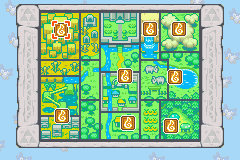 The absolute most important thing for an overworld in Zelda is for it to be expansive, open, and content-filled. Players should not only have the ability to roam around unrestricted, but they should be provided with many things to find along the way. Classic Zelda overworlds excelled at this; there was always something to do with tons of freedom, and it allowed the games to feel like real adventures as a result. Modern Zelda overworlds (with the huge exception of The Minish Cap‘s) are the complete opposite of this. Access to any area is restricted until the games say otherwise and large chunks of land are barren, severely limiting any sense of adventure. Now, the surface portions of Skyward Sword had no problem with the content side of things, but they still followed the modern trend of only being able to visit certain areas at designated times, and the Sky was mostly devoid of anything interesting. Issues like these need to be avoided in the future.
The absolute most important thing for an overworld in Zelda is for it to be expansive, open, and content-filled. Players should not only have the ability to roam around unrestricted, but they should be provided with many things to find along the way. Classic Zelda overworlds excelled at this; there was always something to do with tons of freedom, and it allowed the games to feel like real adventures as a result. Modern Zelda overworlds (with the huge exception of The Minish Cap‘s) are the complete opposite of this. Access to any area is restricted until the games say otherwise and large chunks of land are barren, severely limiting any sense of adventure. Now, the surface portions of Skyward Sword had no problem with the content side of things, but they still followed the modern trend of only being able to visit certain areas at designated times, and the Sky was mostly devoid of anything interesting. Issues like these need to be avoided in the future.
The second-most important thing a Zelda overworld should have is puzzle-solving portions. Most people would probably immediately think of Skyward Sword regarding this aspect, but it actually wasn’t the first game to use these. A Link to the Past and The Minish Cap also sported them with slightly linear areas leading up to the dungeons, designed more around progressing forward rather than exploring. Skyward Sword simply refined and expanded on this.
Having an overworld that consists of nothing but exploration is one-dimensional. There’s nothing else to keep things interesting, nothing else to strike a balance. It also results in an abrupt transition between overworld and dungeon, just like in the original Zelda. The flow of a Zelda game feels more natural when the line between overworld and dungeon is blurred and the transition between the two feels seamless. These areas would need to be interconnected by vast landscapes capable of being freely explored, of course, but Zelda games should still have locations that feature puzzle-solving elements.
Item Use
Usually found in dungeons and used for both progression and combat, items are very important to the Zelda formula. But just having items in a Zelda game isn’t enough. Items must function well and flow seamlessly with the rest of the gameplay. For example, look at the Hookshot and its various kin from A Link to the Past and onward. They’ve always been utilized very well — ranging from being used to pull Link to designated points, damage enemies, pull items in, and lower Link from a ceiling to the floor below — and these uses have always mixed up very well, especially in Twilight Princess. There’s also the Whip from Spirit Tracks and the Beetle from Skyward Sword, the former of which had a multifunctional purpose as a weapon used to hit enemies or chuck things at them, a device to pull switches, and a means of getting across large gaps by swinging across poles, much like the Grappling Hook in The Wind Waker,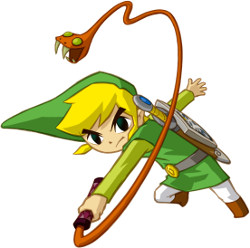 and the latter of which could act as a scouting device, fly into switches, and drop bombs on unsuspecting foes, alongside upgrades that made it fly farther and faster. Items like these are perfect examples of how items should be used in Zelda. They’re used in creative ways and aren’t limited to one specific feature, ensuring they never become stale, and are constantly required throughout the game.
and the latter of which could act as a scouting device, fly into switches, and drop bombs on unsuspecting foes, alongside upgrades that made it fly farther and faster. Items like these are perfect examples of how items should be used in Zelda. They’re used in creative ways and aren’t limited to one specific feature, ensuring they never become stale, and are constantly required throughout the game.
On the flip side, there are some items in Zelda that have not been used so well, some of the best examples being the Bombchus from the N64 games, the Whip from Skyward Sword, and the Dominion Rod from Twilight Princess. The Bombchus were a real let-down simply because they had such a cool function — the ability to move along walls and ceilings before blowing up — but were so underutilized. The only instances they’re ever required to be used in the main quest of Ocarina of Time are in the Spirit Temple and Ganon’s Castle, and in Majora’s Mask, they’re not required to progress in the main quest at all. For an item with such awesome capabilities, it’s a real shame that this is the case. Skyward Sword‘s Whip and the Dominion Rod, on the other hand, suffer from having very limited and uncreative functions. The Whip is watered down from its (mostly) top-down predecessor to being used only for pulling switches and swinging across a few poles, only being useful in combat against two or three enemies. And the Dominion Rod is only used to controls statues which don’t have any use other than smashing things and holding down switches. They also aren’t used very often outside of the dungeons they’re found in. Items like these are perfect examples of how items should not be used in Zelda. They’re either held back from their potential or were just bad ideas in the first place, and they’re not used very often at all or in very interesting ways, which causes them to become a liability for the game design.
There should never be any item that is useless or poorly-executed. There should only be items that are used intricately and constantly. If the day comes where every item in a Zelda game performs like the latter, developers will be one step closer to perfecting Zelda’s gameplay.
RPG Elements
The Zelda series is not exactly a stranger to RPG elements, but generally speaking, it’s been pretty light on them. That’s not the case with every game, of course — look at Zelda II — but that doesn’t change the fact that most games have treated them as more of a side feature rather than a major gameplay mechanic. That needs to change. The series needs to make them a larger factor in the future in order to continue to grow. They would allow for more customization in the franchise, and for a series that’s largely based on building a character, the main feature of an RPG, this would fit perfectly. There are ideas from other franchises that the series could take influence from, but in all honesty, Zelda could easily just improve the RPG mechanics it’s already seen.
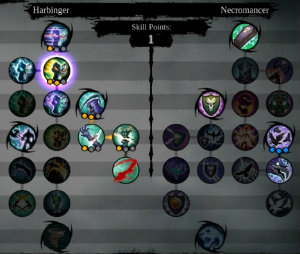 Look at the Rings from the Oracle games. These things offered customization by providing specific benefits depending on which ones were equipped. They had features like dealing more and taking less damage, automatically recovering hearts, not sliding on ice, and even turning into specific enemies. The downside was only one ring could be equipped at a time. What if this were improved by working more like the Medals in Skyward Sword, where them being equipped takes up a slot in the Adventure Pouch, allowing for multiple Rings — or whatever kind of item is used — to be equipped at once? Or maybe they could have their own container like they did in the Oracle games, with something like a point value assigned to them and a maximum number of points available for equipping them. It would provide a lot more resource management and would allow Link to have lots of cool enhancements.
Look at the Rings from the Oracle games. These things offered customization by providing specific benefits depending on which ones were equipped. They had features like dealing more and taking less damage, automatically recovering hearts, not sliding on ice, and even turning into specific enemies. The downside was only one ring could be equipped at a time. What if this were improved by working more like the Medals in Skyward Sword, where them being equipped takes up a slot in the Adventure Pouch, allowing for multiple Rings — or whatever kind of item is used — to be equipped at once? Or maybe they could have their own container like they did in the Oracle games, with something like a point value assigned to them and a maximum number of points available for equipping them. It would provide a lot more resource management and would allow Link to have lots of cool enhancements.
Then you have the upgrading mechanic featured in Skyward Sword; treasure and bugs obtained either in the overworld or via an enemy drop could be used to upgrade Link’s items and potions. Certain weapons could be upgraded to receive new features, while extra containers could be upgraded to hold more of their respective items (Bombs, Arrows, Deku Seeds). It’s a cool feature, but what if it were to be upgraded — shameless pun intended — in the future? What if there were multiple paths for upgrading items, as well as much more advanced upgrades as compared to the ones seen in Skyward Sword? What if we could upgrade Link himself? Gain specific skills to use, such as the aforementioned Hidden Skills and Tiger Scrolls, or maybe make his Stamina Gauge deplete less quickly? There are a lot of options for doing something like this.
Moving on into the realm of things that Zelda could adopt from other franchises, a skill tree could be introduced in the future. Link could gain experience points by defeating enemies or completing tasks and gain different skills after obtaining enough of said points. Some people would probably initially consider this idea too similar to Zelda II‘s leveling mechanic, but it wouldn’t necessarily have to play out like that. The experience points could easily function like a currency and be spent on skills rather than being awarded on level-up. Implementing this mechanic would also provide ample opportunity for magic to return; players could start out with things like basic fire, ice, and electric spells and work their way up to more powerful versions to unleash devastating attacks and provide them new combat options. I’m sure some people would be skeptical about the idea of a skill tree even with the things I’ve said, but as long as it is properly executed, I see nothing but positives from it.
There are many other things I could talk about, but the bottom line is RPG elements should be a focal point in Zelda. I’m really glad that Skyward Sword attempted to make them more of a factor in the gameplay, but these features, alongside other ones, must be expanded upon to keep them fresh. I sincerely hope Nintendo follows through with this.
Non-Linearity
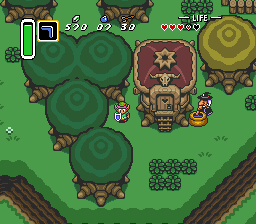 Let’s face it. Zelda is an Action-ADVENTURE series. There’s no real reason for linearity to be a part of the formula. This is an area that most modern Zelda titles have really dropped the ball on. They’re just straight shots with no deviation allowed. For those who would say this isn’t a big deal, allow me to ask you this: How can Zelda, let alone any game franchise, call itself an Action-Adventure series if the entirety of the implied adventure is a dictated path? Shouldn’t an adventure consist of open choice?
Let’s face it. Zelda is an Action-ADVENTURE series. There’s no real reason for linearity to be a part of the formula. This is an area that most modern Zelda titles have really dropped the ball on. They’re just straight shots with no deviation allowed. For those who would say this isn’t a big deal, allow me to ask you this: How can Zelda, let alone any game franchise, call itself an Action-Adventure series if the entirety of the implied adventure is a dictated path? Shouldn’t an adventure consist of open choice?
What if I want to complete a dungeon without a specific item to put myself at a disadvantage or bring better items to make it easier? What if I want to complete the dungeons in a different order to have some variety on subsequent playthroughs? And, more importantly, what if I want to explore the overworld freely to satisfy my taste for discovery? Non-linearity at its best can only aid Zelda; provided it’s not implemented in such a way as to cheapen the game and provide only lackluster options or bad game design surrounding those options, it allows for a more authentic experience, more options and input from the player, and greatly increases the replay value.
Now, linearity CAN be handled well in the Zelda franchise — just look at Link’s Awakening, Majora’s Mask, and The Minish Cap. But the only reason it worked in those games is because it was just the story that was presented in a linear fashion. These games’ overworlds were open and capable of being explored shortly after their first dungeons (with some plot-relevant restrictions), allowing players to freely roam around the land. This early ability to freely roam allowed for proper exploration despite their dungeon orders being linear. Nevertheless, I think it’d be best for the series to allow full-fledged non-linearity — including in dungeon order — in future Zelda games’ design. I’d much rather choose my own path and have the feeling that my choices matter than be told which dungeons to go to and when.
Conclusion
All in all, there are quite a number of things that Zelda needs to do in order to make the most of its gameplay, consisting of things it’s always managed to pull off, features it’s lost as of late, its most recent additions, and ideas it’s never attempted before. You may not agree with me on everything, and that’s fine. These are just my opinions. However, I believe I’ve provided an accurate assessment of what Zelda’s ideal gameplay should be like (or at least the gist of it). A Zelda game with intelligent enemies and diverse combat options, treacherous dungeons that don’t adhere too strictly to a predictable formula, an expansive and content-filled overworld with puzzle-solving, dynamic and frequently-used items, and player choice from both RPG elements and non-linear game design, would in my eyes have perfect gameplay. Being a hardcore fan of the series, I can only hope for the best from it.




